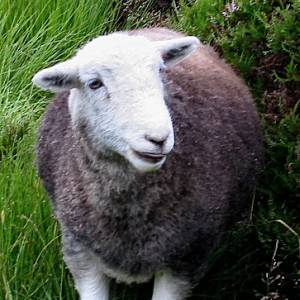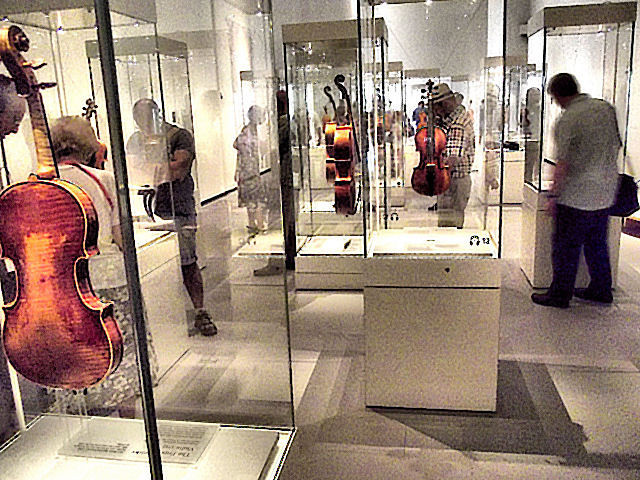Cremona in England!
I have a friend of long standing (I do not say "old friend", but I think we will have known each other for 64 years in September, having met on our first day of the secondary school that we attended together).
Each year in July, this friend takes Mrs Scharwenka and a couple of her local friends to the opera at Glyndebourne. Not only is this a very generous invitation, but he drives the whole party from Oxford to Sussex, and then back again.
After dropping off the invitees at their respective homes, my friend and Mrs Scharwenka can arrive back home quite late (although this year before 2am), and obviously my friend stays overnight with us on Glyndebourne night. Here are some of her photographs from Glyndebourne (and for what follows in my blip here.)
This year, his visit coincided with a spectacular exhibition at the Ashmolean Museum, and he wanted to visit it on the Saturday morning. We were fully in agreement, because I had not seen it, (although Mrs S had been previously).
The exhibition is devoted to the stringed instruments of Antonio Stradivari (often known as Stardivarius).
He was one of the most famous violin makers of all time, and his family came from Cremona in northern Italy, where the Amati family had been making violins of outstanding quality since the mid sixteenth century. Part of the skill in making exceptionally fine stringed instruments is the design and proportions of the sound box and other components. But Cremona is special in being close to sources in the Tyrol of woods particularly suitablr for making violins (and very attractive in appearance as well). These woods include pine. spruce and maple. After construction, the whole is finished off with several layers of varnish that are believed to play a significant role in imparting the special acoustic qualities of the finished instrument. The violin makers from Cremona had developed their own special varnishes that evidently did the trick!
Our main picture shows one of the main rooms of the exhibition, with visitors examining the exhibits. What is on display here must be worth a good amount of money, and a fire would cause a devastating loss of these rare and fine instruments. Here we are on the way in, with the large banners proclaiming the presence of the exhibition.
My sister, who is a professonal violinist, sent me a good link to an explanation of the exhibition and to some fine photographs of the instruments (click on the red arrows on the pictures to go forwards or back).
and here is the Ashmolean's own description of the exhibition.
There's a good video you may want to watch
and some "learning" pages
The aim of Stradivari was to create violins of great power that retained beauty of tone, and yet were comfortable for the player. Each of the individual objectives might require different approaches, so one of Stradivari's skills was in making compromises while not losing achievement of the aim. His instruments show his innovative genius, but are also objects of great beauty, and are testament to Stradivari's great skill and workmanship.
One of the really good aspects of the exhibition was the provision (for a small fee) of audio guides that allowed the visitor to hear the sound in performance of the instrument currently being viewed in the exhibition. Maybe beauty of tone does go along with beauty of appearance and of construction.
I did not want to overload this Blipfoto with too many links to my photographs of the wonderful instruments. Instead, I thought it more appropriate to gather everything together in a photogallery.
What I have attempted to do here is to show selected instruments and in the next frame display a photograph (of variable quality) of the explanatory ticket in the case in order to identify the instrument. I have also interspersed, at what I hope are the relevant points, some of the longer explanations that are mounted on the walls near the exhibits.
I'm only sory that I cannot (easily) attach audio clips for you to listen to, although I have an idea of how it might be done...
- 0
- 0
- Fujifilm FinePix S2980
- 1/9
- f/3.1
- 5mm
- 800


Comments
Sign in or get an account to comment.


